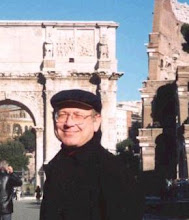Every American taxpayer should know how his country’s banking system works. While how it operates may appear obscure and even intimidating, it is really so simple that all you have to do is watch one particular episode of the Seinfeld sitcom reruns to master its dark secrets.
In the episode entitled “The Wigmaster,” the mechanics of our Federal Reserve banking system are perfectly modeled through the mischief of an unscrupulous parking lot manager. Think of the parking lot as your local bank, watch the show carefully, and walk away with the equivalent of a graduate degree in money and banking.
Two Seinfeld buddies, George and Kramer, have decided to “deposit” their cars in Jiffy Park’s long-term parking lot (Kramer actually gets a free t-shirt for making his initial deposit). The manager of Jiffy Park, like your local bank president, agrees to take care of the deposited property, including providing the necessary storage and protection.
Our two heroes walk away satisfied that their properties are safe, apparently unaware of the deceptive use that will be made of their vehicles. The manager of Jiffy Park, like the president of our local bank, is not really in the business of storing and safekeeping people’s property – instead of depositing the deposits, he loans the deposits out to others for his own gain. In the case of Jiffy Park, the cars are borrowed by prostitutes to perform “tricks,” while in the case of our local bank, the deposits are borrowed by business people, homeowners, and other people performing transactions of a more legal nature.
That our bank deposits are loaned to borrowers is not really a secret to most of us, but the more sinister aspects of the banking system become apparent when we realize that, if our deposits have been loaned out to borrowers, they should not be available to be returned to us upon our demand. This, like the case of Jiffy Park, reveals the dark side of loaning out for profit what really belongs to other people.
Kramer chooses to withdraw his deposit (his car), when it is currently being used by a prostitute plying her trade. This is invariably what will happen when people make withdrawals from their bank accounts. In Kramer’s case, Jiffy Park tells him that his property is currently unavailable, but he can have a Mary Kay Cadillac instead. In the case of our bank withdrawals, our money might be on loan, but we can have someone else’s deposited money instead.
Like Kramer, we can go about our business using someone else’s deposits. In Kramer’s case, the excitement of a pink Cadillac is enough to make him forget that his own deposit is unsafe. In the case of our bank deposits, the money of another bank customer is just as good as our own. Everything is fine until Kramer and the owner of the Mary Kay Cadillac want there vehicles at the same time or until there are a large number of simultaneous withdrawals from our bank.
For Jiffy Park, there are other vehicles to tantalize the gullible customer but in the case of our local bank, fooling the customers requires the help of the Federal Reserve. As the “lender of last resort” the Federal Reserve is in the business of providing an endless supply of Mary Kay Cadillac’s to our local bank. If too many customers want there deposits back when they are on loan to others, the Federal Reserve will always produce more deposits that look just like our deposits, keeping the bank from the embarrassment of having to admit that your deposits are not really deposited – they are being used by the bank to make its own profit.
So, as long as the Federal Reserve keeps coming up with pink Cadillacs, what is the harm? The harm is called inflation by credit expansion. Jiffy Park has taken, for example, ten cars and made them look like twenty. Ten drivers deposited ten cars and think they are the sole possessors of the ten cars, but ten prostitutes also think they are the rightful possessors of ten cars. Twenty people think that they have exclusive use of a vehicle, but there really was only ten cars deposited in the lot. Jiffy Park has counterfeited ten additional cars.
In the case of our bank, the amount of money originally deposited is believed to be owned by the depositors, but the borrowers actually believe that they own the money also (there is a “fractional reserve” of the deposited money that the bank cannot loan out but that amount is small and disregarded here for simplicity’s sake). Due to the bank’s ability to loan out deposits, the economy has far more money in it while having the same number of goods to buy with the money – the bank is the source of inflation. In the same way that Jiffy Park inflated the number of cars possessed through its deceptive practices, the banks are allowed, legally, to inflate the economy by loaning out money that they are pretending to keep “on deposit.” Your local bank counterfeits “legal tender.” In boom periods, banks inflate the economy; in periods of pessimism, they reduce the loans and thereby deflate the already inflated economy, causing unemployment.
The Seinfeld episode ends with an innocent Kramer in a police lineup after he and a prostitute made simultaneous claims to a Mary Kay Cadillac. This is where the analogy to our bank ends; unlike Jiffy Park, there can never be a shortage of Mary Kay Cadillacs for our banks, the Federal Reserve can produce an endless number of them. The Ponzi scheme of banks counterfeiting money by undepositing deposits can continue until the American taxpayers learn about their banking system and find out that they are the ones buying all the Mary Kay Cadillacs.
Subscribe to:
Post Comments (Atom)





No comments:
Post a Comment